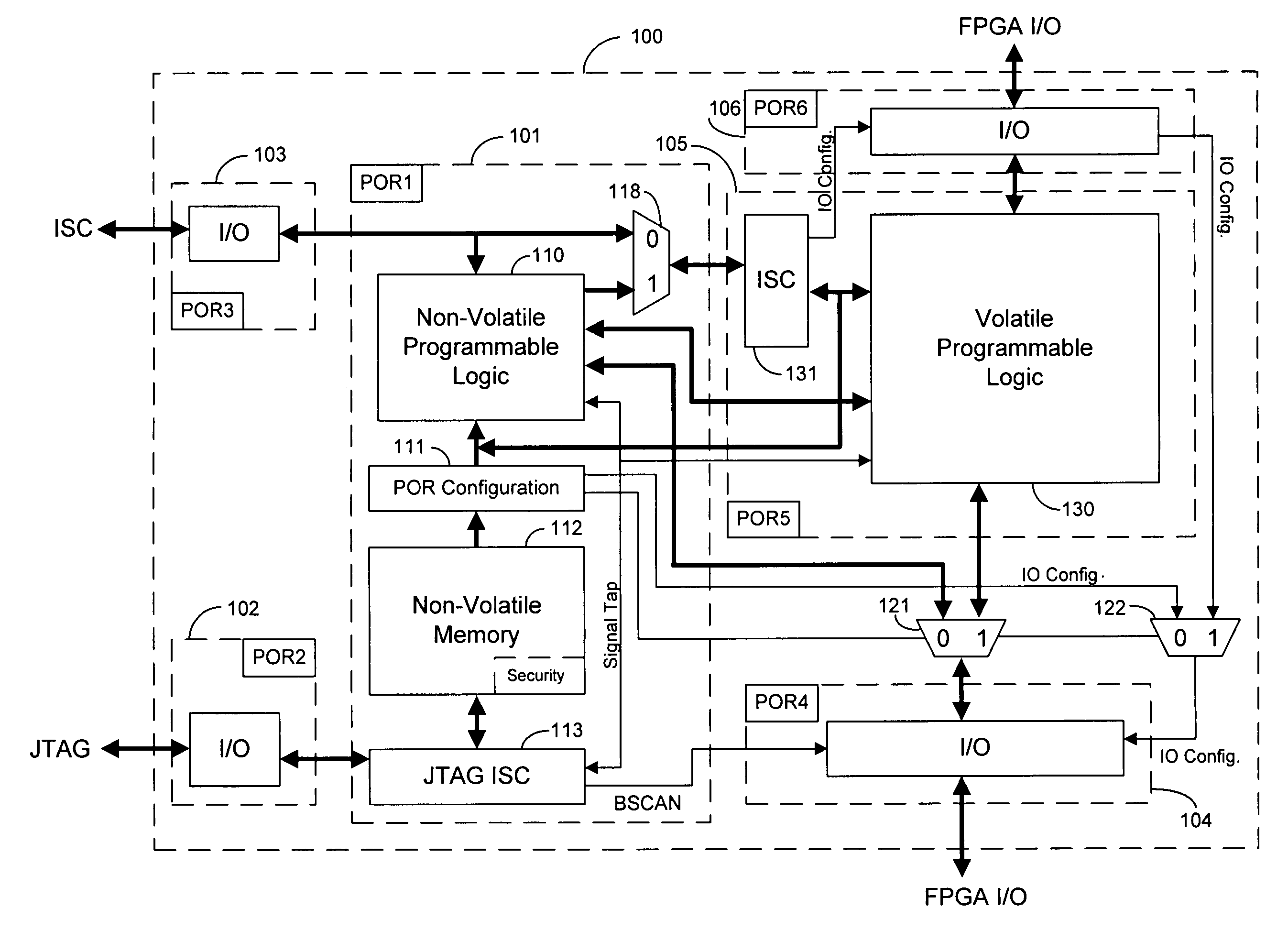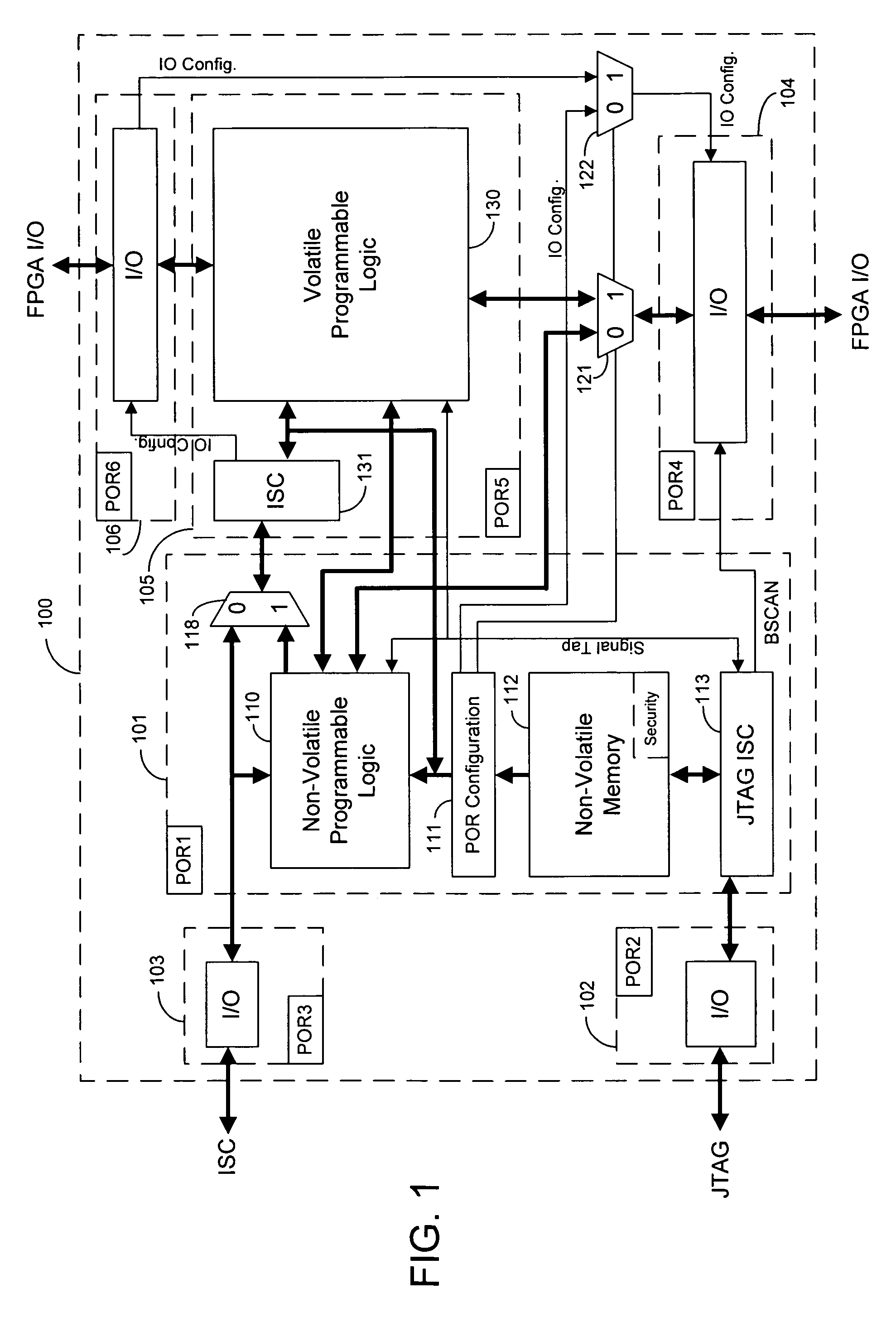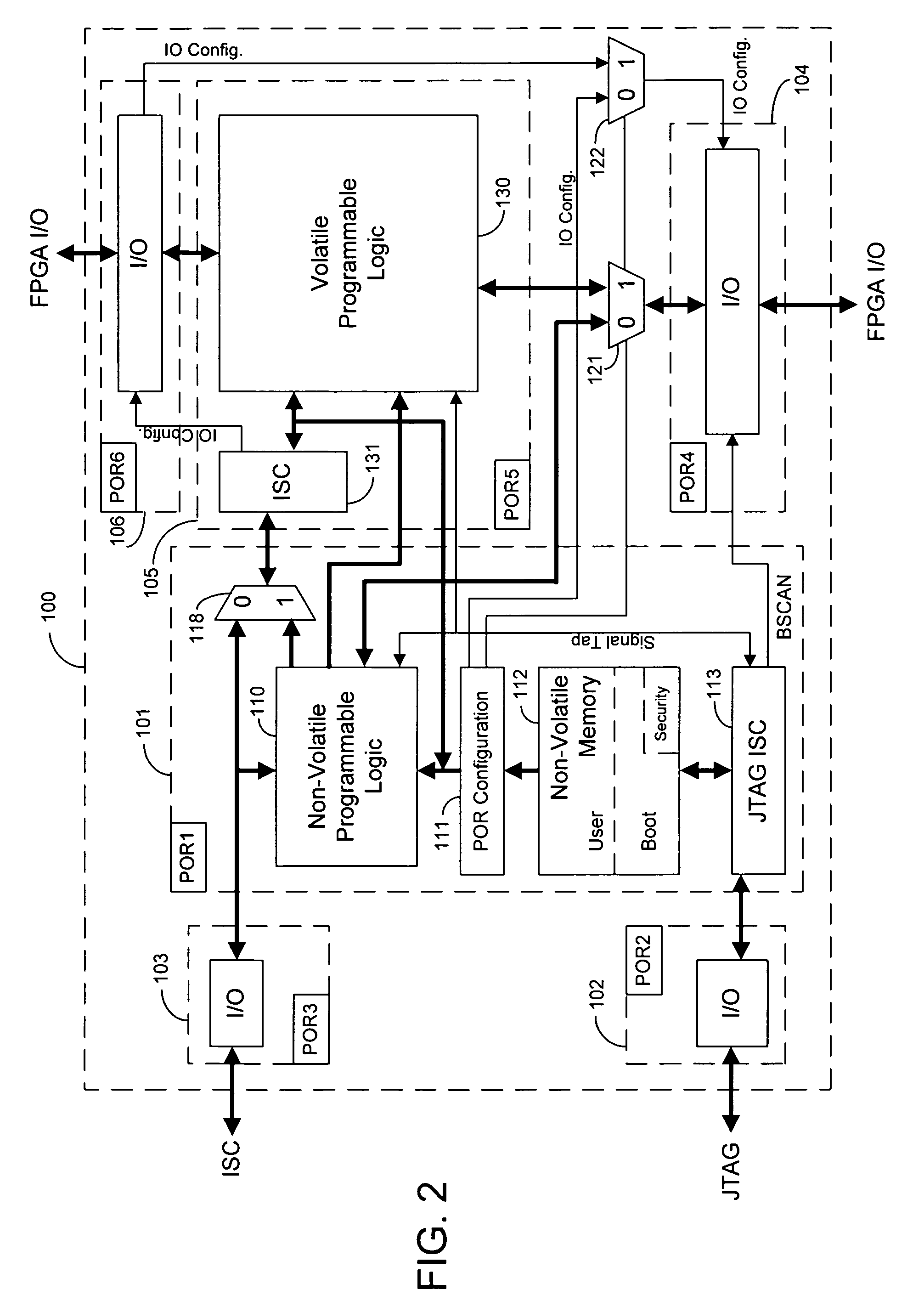Techniques for combining volatile and non-volatile programmable logic on an integrated circuit
a technology of programmable logic and integrated circuit, which is applied in the direction of pulse technique, instruments, computation using denominational number representation, etc., can solve the problems of limiting process selection, prohibitive non-volatile memory, and large field programmable gate arrays (fpgas) that contain on-chip volatile memory blocks that require a considerable amount of time to be configured at power-up
- Summary
- Abstract
- Description
- Claims
- Application Information
AI Technical Summary
Benefits of technology
Problems solved by technology
Method used
Image
Examples
first embodiment
[0015]FIG. 1 illustrates a portion 100 of a programmable logic integrated circuit (IC) that has been designed according to the present invention. Portion 100 includes a first block 110 of programmable logic and a second block 130 of programmable logic. Both programmable logic blocks 110 and 130 contain programmable logic circuits. The programmable logic circuits can be, for example, lookup table based or product term based logic elements. The architecture of the programmable logic arrays in blocks 110 and 130 can be the same or different. Logic blocks 110 and 130 can also include memory. The memory in both of blocks 110 and 130 can be, for example, volatile memory such as SRAM cells.
[0016]The programmable logic in block 110 is configured by configuration bits stored in non-volatile memory block 112. Configuration bits can be stored in non-volatile memory block 112 by a manufacturer or by a user. Power on reset (POR) configuration block 111 transfers configuration bits from non-volat...
second embodiment
[0040]FIG. 2 illustrates the present invention. According to this embodiment, two sets of configuration data can be stored in memory block 112. The first set of configuration data is a boot pattern that is programmed by the manufacturer to give the FPGA standard functionality for every customer, such as an ASSP. This embodiment has the advantage of allowed a FPGA manufacturer to change the product definition over time by a simple change to out manufacturing test flow.
[0041]Once a user has defined an application, the user can write additional configuration data into memory 112. For example, a user can store configuration data in memory 112 that is used to operate the FPGA in a diagnostic mode to test various signals.
[0042]In an OTP type non-volatile memory, two partitions are need in memory block 112. One partition is used to store the manufacturer's default boot configuration data, and one partition is used to store user configuration data to better meet a user's specific needs. The...
PUM
 Login to View More
Login to View More Abstract
Description
Claims
Application Information
 Login to View More
Login to View More - R&D
- Intellectual Property
- Life Sciences
- Materials
- Tech Scout
- Unparalleled Data Quality
- Higher Quality Content
- 60% Fewer Hallucinations
Browse by: Latest US Patents, China's latest patents, Technical Efficacy Thesaurus, Application Domain, Technology Topic, Popular Technical Reports.
© 2025 PatSnap. All rights reserved.Legal|Privacy policy|Modern Slavery Act Transparency Statement|Sitemap|About US| Contact US: help@patsnap.com



